According to the secretary of state for education, pretty much any old building can be turned into a classroom. But is that actually true? Thomas Lane did some research
’We shall build in the shops. We will build in the houses. We will build with confidence … and growing strength … in the churches. We shall defend our free schools whatever the cost may be.” Well, okay, education secretary Michael Gove may not possess Churchillian powers of rhetoric or leadership, but he, too, has taken on something that at first sight appears to offer little but blood, toil and tears.
If Gove is to achieve victory over the massed ranks of doubters, sceptics and mockers, he will have to demonstrate that groups of parents have the resources, knowledge and time to set up DIY schools.
If you stop to think about all the inputs necessary to create a school, it’s clear that amateur educationalists will have a struggle on their hands. Parents will have to choose an educational philosophy, prove there is local demand for it, employ staff to deliver it, scale mountain ranges of bureaucracy and, of course, find somewhere to put it.
It’s the last of those problems that interests the construction industry, of course. One of Gove’s rallying cries is that these “free schools” can be set up in anywhere without the need for change of use consent. But finding and converting empty premises will not be easy. Schools are specialist buildings designed for a specific purpose, and so are many disused premises, but not the same one. Making them suitable teaching spaces will require substantial remodelling.
However, if Gove can waive change of use rules, it will be a significant step: in the past it has been difficult to get planning permission to set up a school. Caroline Buckingham, director in charge of education at HLM Architects, points out that, for example, “some Montessori schools really struggled to get consent”.
The second issue will be meeting the tough space, acoustics, lighting and ventilation standards contained in the schools building bulletins. Gove says he will “sweep away” the regulations that inhibit the creation of new schools. It’s true that some of the standards are onerous, but pupils still need good daylighting, ventilation and acoustics.
Refurbished premises will also have to conform to the energy standards of Part L, which could be a challenge for some building types - unless Gove is proposing that schools should be allowed to be less energy efficient than other refurbished buildings.
A third issue is that many of the potential school buildings are tiny. The first stage in setting up a free school is to contact an organisation called the New Schools Network, which will provide advice and guidance on the early stages. It has a database of empty premises that could be suitable for conversion into schools. These include a 67m2 library in Yorkshire and a 50m2 doctors’ surgery in Southwark, south London. Most are around the 1,200-5,000m2 mark, which isn’t big by schools standards - particularly as they will need outside space.
“Does this signal a return to small schools? Is the 1,200-place school still appropriate?” muses Andy Theobald, a partner in Feilden Clegg Bradley who has been involved in a number of academies. “This could have a big impact on class sizes and how you teach.”
Simon Rawlinson, a partner in Davis Langdon, foresees other problems. “It can’t be efficient to build lots of small schools,” he says. “It’s likely to result in inefficiencies such as a caretaker with not much to do - and how do you feed the children?”
To gauge how practical Gove’s idea is, Building asked Buckingham, Rawlinson and Theobald to use their expertise to assess the practicalities of converting a selection of building types into schools.
Former Woolworths outlets
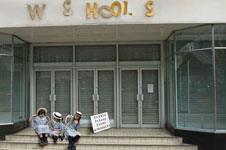
With 40% of Woolworths stores remaining empty 18 months after the retailer went bust, there are plenty of opportunities for converting them into schools. Shops are large, deep-plan spaces on high streets, often with accommodation above.
Advantages Parents can pick-and-mix as there are plenty of stores with good central locations. Internal space are large and flexible and can be subdivided easily. If the space upstairs isn’t leased out, it could be ideal for administration or smaller group teaching. Delivery yards can be converted into play spaces.
Disadvantages Getting daylight and fresh air deep into the building would need to be done mechanically, so the building would be expensive to run. Entrances would need to be remodelled.
Likely users Independent faith schools with two or three classes. A high-street presence could lend itself to enterprise-driven education such as hairdressing or business studies.
Ranking 5/10
Magistrates’ courts
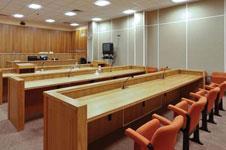
The government is consulting on closing up to 100 magistrates’ courts. They have a variety of different-sized rooms ranging from courtrooms to offices and cells.
Advantages Good, central locations. Courtrooms are ideal for classrooms, and there are plenty of smaller rooms for offices, group teaching and laboratories. Public entrances are ideally suited to a school. Drop-off spaces for offenders can be easily converted to play areas. Daylight, ventilation and acoustics should be acceptable.
Disadvantages Courts are designed to keep public, offenders and magistrates separate, so a degree of reconfiguration will be needed to break these boundaries down.
Likely users Primary and small secondary schools. All those empty cells could suit a more traditional, severe approach to education …
Ranking 6/10
Doctors’ surgery or health clinic
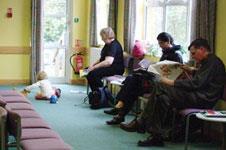
A warren of small, cellular rooms interspersed with larger waiting rooms. Likely to be close to communities and may have parking facilities, particularly in rural areas.
Advantages Will be handy for parents and the parking space can be easily converted to play areas. Entrances will suit a school.
Disadvantages Healthcare facilities are designed to be private and inward-looking - for example, windows are located high up - so an expensive conversion would probably be required. The building and its rooms are likely to be small, so they would need extensive reconfiguration to create teaching spaces and install kitchens.
Likely users Toddlers’ groups or a small primary. Could work as part as a campus school spread over a number of locations or as a study centre for sixth-form pupils.
Ranking 3/10
Offices

These come in all shapes and sizes, from old buildings with cellular rooms to modern, open-plan buildings.
Advantages This variety means offices should be suitable for any size of school. Modern buildings are designed for flexibility so will be easy to configure. Easy, too, to create a variety of space. They are usually located in the centre of a city or town, so parents can drop kids off on their way to work. They should also have excellent IT infrastructure, decent lighting and ventilation.
Disadvantages Many lack outside space. Those that do have it are more likely to be on business parks or next to motorways, which are not ideal locations. Offices rely on lifts and escape stairs for circulation, so they wouldn’t be able to cope with large numbers of pupils moving around at the same time. Finally, buildings tend to be leased over relatively short periods of time, so could be expensive to convert into a school, and to reconvert at the end of the lease period.
Likely users Pretty much any type of school.
Ranking 7/10
Churches or chapels
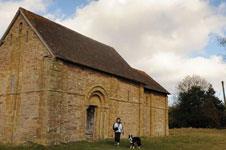
These could range from traditional churches with a spire to Methodist chapels.They will have one big open-plan space with minimal secondary rooms.
Advantages Good for schools requiring one big teaching space. They will be cool in summer and will probably come with plenty of outdoor space. If sensitively converted, they could make an exciting teaching space. Good for school concerts, too.
Disadvantages They lack smaller rooms for administration or teaching small groups, there will be nowhere to prepare food and the main space is likely to be very high and difficult to subdivide as many religious buildings are listed. Lighting, acoustics and heating will all pose considerable problems.
Likely users Those in favour of traditional teaching methods. Chapels will be suitable for the 19th-century concept of one-room teaching, and churches are suited to person standing at the front and delivering a lecture.
Ranking 4/10
Library
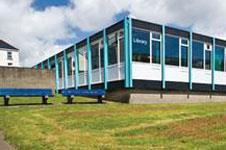
Large, central, open-plan space with smaller offices attached. They tend not to have parking and will be situated in town centres.
Advantages They are not too difficult to convert to a school as they are likely to have reasonable amounts of daylight and good ventilation. They will also lend themselves to conversion as they have central teaching space with smaller rooms for small group teaching and administration. They will come with IT infrastructure in place and they will be close to the communities they serve.
Disadvantages Poor acoustics could be a problem in the central space. Libraries tend to have quite tall central areas, so could be more expensive to heat.There is no obvious place to put kitchens, and not necessarily any space outside for children to play.
Likely users Probably only for primary schools. They could be ideal for this as children could be taught in groups in the big central space and in smaller rooms off the main library area.
Ranking 7/10





















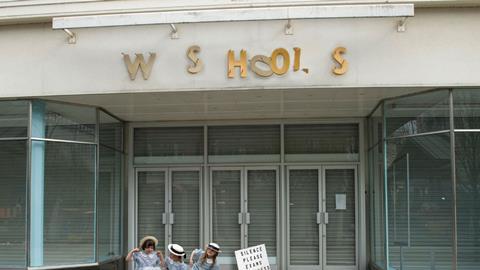






No comments yet